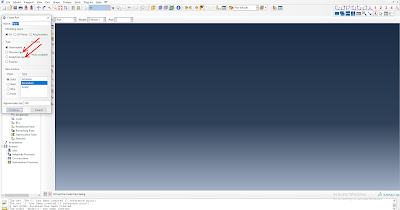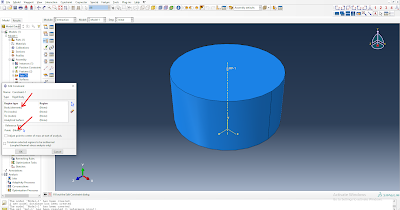abaqus rigid body
hi Abaqus students.
We will see how to do the rigid parts in Abaqus software in this post. The rigid part is like a very hard structure. This method can be used for a system such as the general tool of simulation. This rigid part can be created in two ways.
The first method is to create it in part creation using discrete rigid or analytical rigid. But if we create a rigid part in this way, we will not be able to give any material properties to that rigid part. The second way is to make the part deformable in part creation and give the constraints for the rigid body in the interaction section. You can also use the material properties to create a rigid part in this way.
To implement this method you need to place a reference point on the rigid part (tool> reference point). If you give a name to this reference point, you can use that name when giving a constraint manager and boundary condition. This can be done by selecting the reference point in assembly> set> create in the side menu bar and creating a new name for the reference point. Then click on the create constraint icon which is 3rd from top to bottom in the side icon menus in the interaction section.
Clicking on the create constraint icon will create a new tab. In that new tab, select rigid body and click continue. In the new tab that appears after clicking continue, select the body (elements) and click on the cursor-like icon next to it. After clicking on the cursor icon, click on the part for rigid part and done. Then click on the cursor icon next to the reference point in that tab.
Then click on the set menu that appears in the corner of the main page. After clicking on the set menu, the name set we gave for the reference point will appear in a new tab. Click on that name set and continue. Now if we click ok on the old tab that will be created again, our rigid part will be created. This type of rigid part will be examined as the rigid part generated in this method is given material properties. The use of rigid part reduces the time taken for analysis.



Comments
Post a Comment
Thanks for visiting my blog